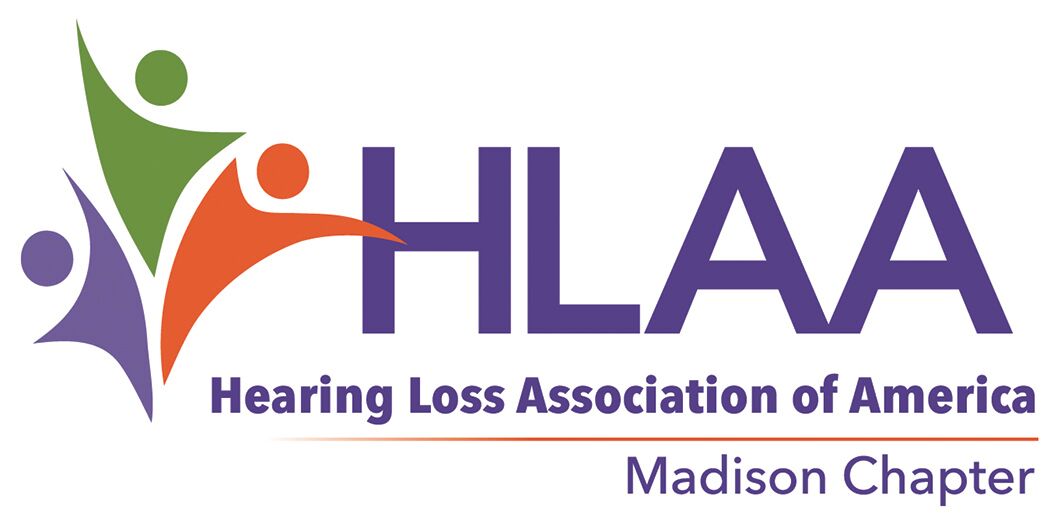Following are tips that may assist help you in listening situations with masks. These solutions are no one-size fit all as different situations may include different strategies.
The Issue
The “mask effect” affects everyone. Those with normal hearing are noticing that sounds are somewhat muffled and they struggle to hear. The issue is much more significant for those with hearing loss. Face masks can reduce sound as much as 12 decibels and block one’s facial expressions from being seen.
What are the exceptions to the Mask Orders?
The CDC indicates to consider whether you can use clear face covering to communicate with someone who is deaf or hard of hearing. If a clear face covering isn’t available, consider whether you can use written communication, use captioning or decrease background noise to make communication possible while wearing a cloth face covering that blocks your lips.
The State of Wisconsin (and City of Madison/Dane County) – when communicating with an individual who is deaf or hard of hearing and communications cannot be achieved by other means.
Tips in Hearing with Masks
Advocacy
- Prepare in advance.
- Can you share information or ask questions in advance by email, phone or video call?
- Choose virtual communication options for appointments. If you rely on lipreading, video calls are a good option.
- If safe and permitted, can you bring someone with to assist?
- For doctor appointments, ask if the provider can wear a clear face mask to assist you in hearing.
Determine approaches in self-advocacy.
- How do you want to self-disclose and advocate for yourself?
- Prepare a handwritten note on paper or digitally indicating you don’t hear well when masks are worn. Provide specific directions on how they can help.
Have communication strategies in place. Anticipate the different settings you may need to communicate in.
- Ask the other person to speak louder and slower.
- Adjust the volume in your hearing device. Some audiologists have begun to add mask settings to hearing aids. These settings boost the higher pitched sounds blocked by masks.
- Always bring paper or pens as a backup.
- Request rephrasing if you have already asked twice to repeat information.
Utilize technology to facilitate communications.
- Use smart phone apps that can help with communication. Pair with a wireless microphone or plug in microphone compatible with your smartphone to improve pickup of speech at a distance.
- Consider speech-to-text apps such as:
- GoogleLive Transcibe (can type back, many languages) – compatible with Android
- Ava
- Otter.ai (English only) – compatible with both iOS and Android
- Microsoft Translator (you can type back, can translate, many language – compatible with IOS, Android, Windows)
- Web Captioner (many languages) – universal webpage
- Prepare digital flashcard apps or paper index cards with information and phrases that can help minimize questions or comments. Examples of messages:
- I am hard of hearing.
- I do not understand you with your mask on.
- Please speak into my smartphone . I am using it to understand you.
- Apps that are available to create digital flashcards for this include:
- Buzz Card
- Cardzilla for iPhone
- Cardzilla for Android Phone
- Big Note for iPhone
Hearing Technology Solutions
Consider using hearing technology solutions and hearing accessories. Use assistive listening devices that can extend a hearing aid or cochlear implant’s range in picking up spoken language.
- Roger pen
- Remote Mics – mini microphones that streams via Bluetooth into your hearing device
- Remote mic attached to a Pocket Talker
Resources:
Deaf/Hard of Hearing Technology Rehabilitation Engineering Research Center:
Face Masks and Hearing Loss: Practical Tips and Strategies:
https://www.hearingloss.org/webinars/face-masks-hearing-loss-tips/
https://www.hearingloss.org/wp-content/uploads/5-21-2020_FaceMasks_QA.pdf
Face Masks
www.hearwi.org (shows how to make mask with window)
